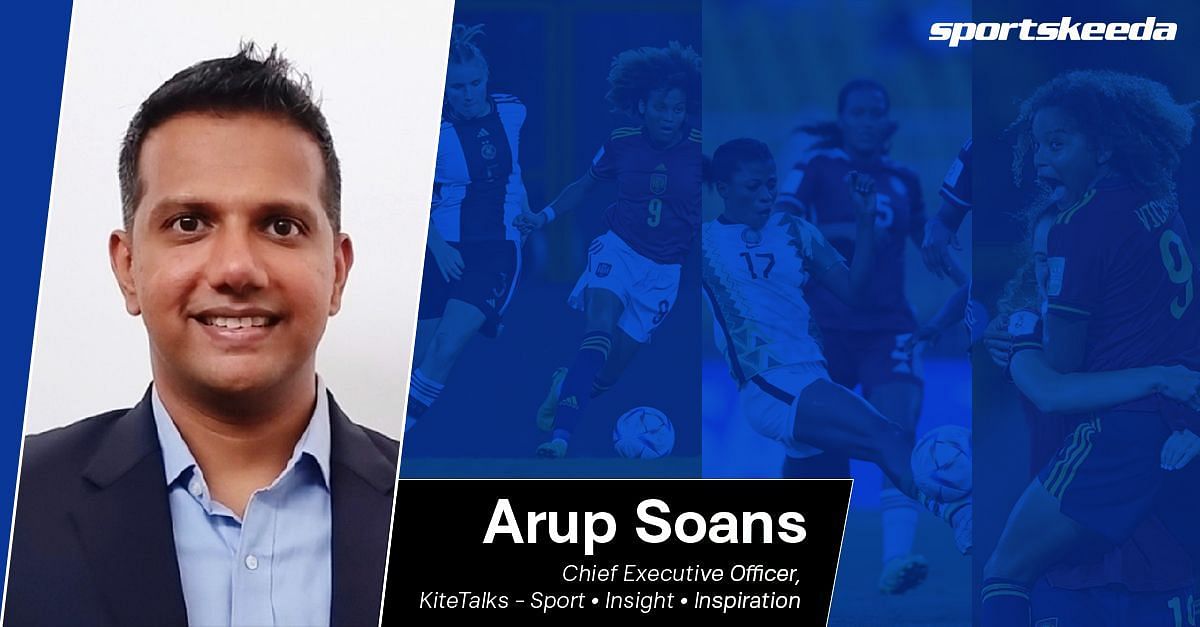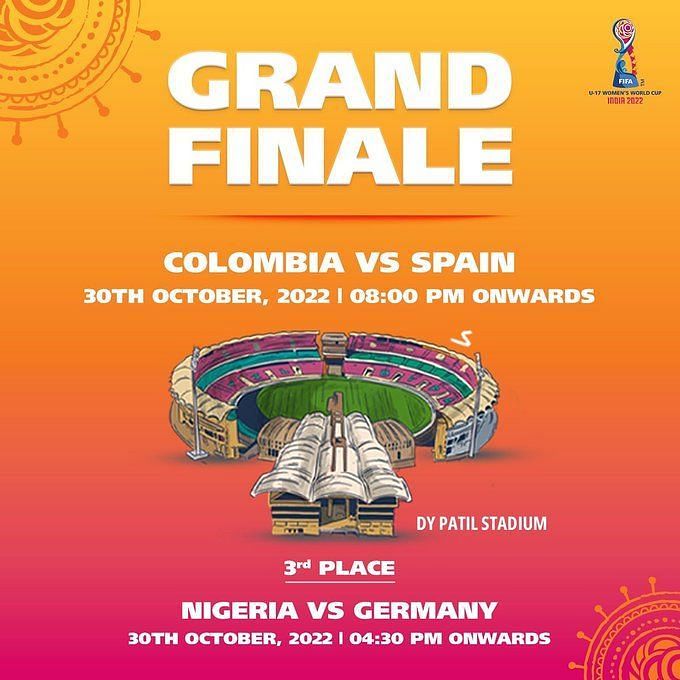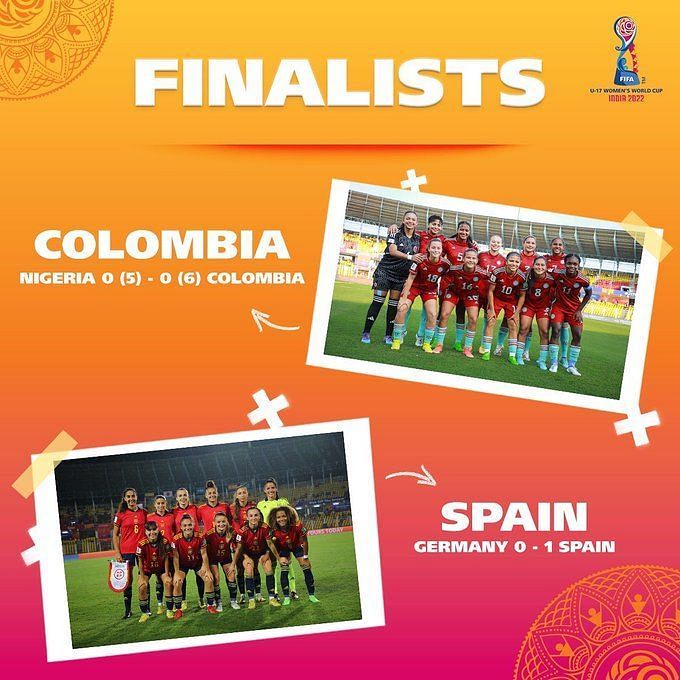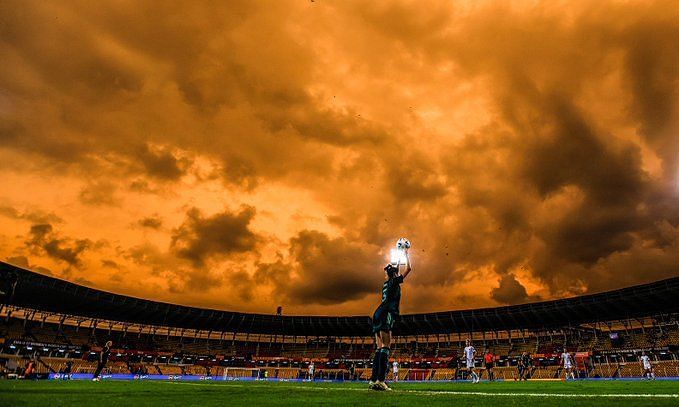
‘AIFF suspension did more good than bad for [FIFA U-17 Women’s World Cup] tournament’s media reach’: Arup Soans
The FIFA U-17 Women’s World Cup currently hosted by India, concludes on October 30.
The Indian team had expectedly crashed out during the group stages. But for players, fans and organizers, it was a once-in-a-lifetime experience to have the privilege of conducting an event of such magnitude.
So beyond on-field wins and losses, how can the FIFA U-17 Women’s World Cup create a long-term positive impact for the development of the world’s most popular sport in India?
BOS expert Arup Soans, who was Head of Marketing at the only other FIFA World Cup to be hosted by India – the 2017 FIFA U-17 Men’s World Cup – shares his considered opinion on diverse aspects ranging from media strategy, sponsorship, fan activation, grassroots exposure, COVID concerns, negative publicity leading into the marquee event, and a whole lot more.
FIFA U-17 Women’s World Cup in India
1) India has been expectedly outclassed by much superior rival teams in the ongoing FIFA U-17 Women’s World Cup. Won’t this perpetuate negative stereotypes around Indian women “not being good enough” to play football at the elite level? From a messaging perspective, how do you tackle this?
Optimists (who aren’t aware of the international level of play) would have expected India to do well (draw or win a game) playing in a World Cup. Realists (those aware of the level of play) would have known well in advance the eventual outcome of the matches that India were to play.
As much as we hope that the results would have not been demoralizing for the girls, the exposure for them and the country as a whole is unlike any other football tournament.
We already know that Indian women are very capable of performing on the international stage given the progress we have seen at the senior level. From a messaging point of view, it is important to have a circumspect approach to this and throw light on all the positives of hosting a tournament of this magnitude and not just the results of the Indian team playing on the field but the results of the Indian team working across different areas and managing different high-level stakeholders to deliver a successful World Cup.
2) In the current nascent stage of Indian women’s football, would the sport have been better served by organizing grassroots/developmental activities instead of a big-ticket event like the FIFA U-17 Women’s World Cup?
There could be multiple views on this.
On the one hand, what the country really needs in order to raise the level of football is for the focus to be on the grassroots. Thus, having multiple developmental activities would definitely make more sense.
On the other hand, hosting a tournament that requires involvement from stakeholders at the highest office shows the intent to grow the sport and gives impetus to the grassroots level.
It is also important to understand that tournaments like these raise the commercial interest of brands wanting to invest in the sport as well as interest from FIFA to invest more time, money and resources into the country.
3) From an operations standpoint, how valuable is the exposure to the local organizing committee (LOC) to have worked on two FIFA U-17 World Cups in a span of just five years? How do you see this operational experience gained, translating in real terms to better execution of future footballing events in India?
There is nothing better than the on-ground operational experience of hosting a FIFA World Cup. FIFA have been implementing their operational learnings for almost a century, and getting that exposure at a local level is invaluable. This will not only see us execute better football tournaments, but will help us as a country, host more efficient sporting events overall.
Those who worked on the FIFA U-17 World Cup in 2017 like myself had the opportunity to experience the most attended youth World Cup ever while those working on the current World Cup have had the opportunity to think of operations in a once-in-a-lifetime scenario given the global pandemic and the dangers that might bring to players, fans and staff.
4) How do you assess the activation/fan engagement strategies being undertaken to maximize the impact of the FIFA U-17 Women’s World Cup among spectators, especially young girls, to inspire them to take up football?
Hosting football festivals and coaching (women's) education activities have been the highlight of some of the engagement strategies on the ground despite Covid-19 having played spoilsport at many levels. The online engagement could have been far more detailed and aggressive, given the restrictions on hosting activities on ground.
If I were part of certain decisions for this tournament, two things would have been different. First, the kick-off time of the second game would have been much earlier so as to account for families (primary target audience) attending the games and second, the stadiums would have been filled with school students from the local areas for free and holding the local stakeholders accountable to make this happen.
This tournament is an opportunity to give kids of all ages exposure and inspiration of a global high-level youth football tournament.
5) Has the AIFF suspension leading up to the event adversely affected the buzz around FIFA U-17 Women’s World Cup?
People sometimes say that any media exposure is still exposure.
In my opinion, the AIFF suspension in fact did more good than bad for the tournament’s media reach. Since the news did catch many front and back pages for almost two weeks, the tournament ended up being the talk of many households and people actually realizing that the country is hosting another World Cup.
Of course, the buzz would have been more positive had there not been any suspension, but coverage across non-host cities did witness a huge jump during that period. Hopefully, this translates to people watching matches on television as well.
6) Are brands, investors, and sponsors adequately leveraging the exposure opportunities around the FIFA U-17 Women’s World Cup?
As per my knowledge, the national sponsors (Indian companies) signed up very close to the start of the tournament and currently, their exposure extends as much as the broadcast exposure of the tournament.
You will notice that the national sponsors are either Indian MNCs or Public Companies that have a vested interest in showcasing themselves outside India as well.
Usually, FIFA contracts allow brands to continue their activation campaigns three months after the tournament ends so I do hope that the brands will continue to leverage the tournament logo and other assets to promote themselves and football as a whole.
7) Just a few months ago, the assistant coach of the Indian U-17 Women’s football team was sacked for alleged sexual misconduct. What has the fallout of this incident been, especially in the context of women’s safety around participation in sport?
The key to incidents like this is swift decision making and swift action. I am not sure that was the case here. I am not too aware of the current situation with regards to this incident, though it is imperative that organizations like AIFF and FIFA have systems in place to proactively ensure the safety of women not only by participating in football, but by working in it as well. Reacting to incidents or attempting damage control after such incidents show for poor systems in place.
8) Earlier this year, there was the forgettable episode of the senior Indian women’s team forced to withdraw from the Asian Cup because of a COVID outbreak, despite India being the host of the event. Administratively, what change would you like to see for the betterment of women’s football?
Unfortunate, we can only look back and learn from that experience. Not only women’s football, but football and sport in general across the country need two things to start with – professionalism and accountability.
When we talk about women’s football specifically, it requires an attitude of player first. We, as a nation, have the talent and the motivation. We require the system to allow players to be the most important asset of the sport. Not the administrators or sponsors or politicians or facilities.
This can only be achieved by a unified approach. It is easier said than done, though if the system is set at the most local level, it will eventually grow to become a national level system. We have to start from the bottom up and not top down.
9) With both the U-17 boys team, and now the U-17 girls team losing World Cup games by heavy margins, what is your take on the need for a minimal level of competitive exposure and access to mental conditioning coaches, to improve our performances?
Our current scouting system brings in players at age 13-14 to be groomed to play at the U-17 level. In my opinion, that is almost 6 years too late. This isn’t the fault of the system as such, but the fault of short-term thinking and having our sights on short-term success.
Let’s assume our girls and boys qualify on merit for the U-17 World Cup anytime between 2032 and 2036. Those boys and girls would be currently between 4 and 7 years of age. Do we know who they are? Well, the others countries do.
This would also mean that these boys and girls need to compete at an Asian-level competition first to be able to compete on a global scale.
We should be learning from our Asian counterparts instead of finding solutions in Europe or elsewhere. The question of coaches and their ability to drive the system forward has to move in parallel. Finding and upskilling local coaches is just as important as finding players. The team off the field needs to be as much Indian as the team on the field.



